|
|
|
Sort Order |
|
|
|
Items / Page
|
|
|
|
|
|
|
| Srl | Item |
| 1 |
ID:
142822
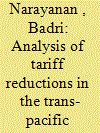

|
|
|
|
|
| Summary/Abstract |
Our purpose is to undertake a comparative analysis of the likely impact of tariff reduction under the Trans-Pacific Partnership (TPP) on various macro and trade variables of the Indian economy under different scenarios. The TPP was concluded in October 2015, but it is yet to be ratified by the partner countries, and while Asian giants like India, China and Korea have not joined the TPP, there are some talks about their joining the partnership in future. Ours is a unique study that evaluates India’s perspective on joining the TPP, in terms of tariff reduction, and not in terms of the removal of non-tariff barriers. We employ the widely used standard Global Trade Analysis Project (GTAP) model for this exercise. This is a unique framework with a global economy-wide approach, in a Computable General Equilibrium (CGE) setting. Five different scenarios of complete integration in terms of tariff reduction between different regions are simulated using the GTAP model. Under each scenario, the tariff among members of a group of regions is eliminated, but is unchanged for other regions. Higher welfare arising from allocative efficiency comes with the cost of a relatively lower consumption of domestic products and investment, resulting in a loss in terms of GDP. Therefore, we conclude that there are mixed prospects and no strong reason for India to pursue being part of the TPP in future, from a perspective of tariff reductions.
|
|
|
|
|
|
|
|
|
|
|
|
|
|
|
|
| 2 |
ID:
164421
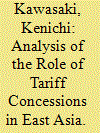

|
|
|
|
|
| Summary/Abstract |
While many studies focus on the impact of trade agreements, the literature has not focused on the extent of their implementation, in terms of the aspects agreed upon therein. In this article, we identify the past achievements of economic partnership agreements (EPAs) in the East Asian region in terms of tariff removals and suggest room for further economic benefits from trade liberalisation in the region. Second, we incorporate the HS6-level tariff concession dataset, which distinguishes between tariff removals agreed in these EPAs in East Asia but not yet implemented, from existing overall tariffs in 2011, in the Global Trade Analysis Project (GTAP) Database, which only incorporates enforced tariff reductions through the base-year applied tariffs. To analyse future trade integration, we include commitments that are not yet implemented. This allows us to analyse partial versus full enforcement of tariff concession commitments. Our results suggest that taking those commitments into account matters economically in East Asia.
|
|
|
|
|
|
|
|
|
|
|
|
|
|
|
|
| 3 |
ID:
161764
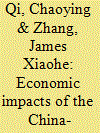

|
|
|
|
|
| Summary/Abstract |
After 21 rounds of intense negotiations over nearly a decade, the deal of China-Australia Free Trade Agreement was finally completed in late November 2014. This paper attempts to examine both the causes and consequences of this delayed conclusion by running simulation experiments on a computable general equilibrium model, to see how the free trade agreement affects the world economy not only on the two countries involved, but also on the rest of the world with a particular reference to New Zealand. Based on the simulation results, policy implications are generated.
|
|
|
|
|
|
|
|
|
|
|
|
|
|
|
|
| 4 |
ID:
133886
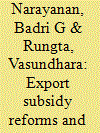

|
|
|
|
|
| Publication |
2014.
|
| Summary/Abstract |
The World Trade Organization (WTO) recommends all members to phase out their export subsidies. While this may render export-oriented industries susceptible to tighter competition in their import markets, productivity improvements could help offset such disadvantages. This article explores the interaction between these two different aspects to evaluate the economy-wide impact of export subsidy reforms and productivity improvements in the Indian textile and clothing sector. Our analysis stands on various policy simulations applying the general equilibrium model of the Global Trade Analysis Project (GTAP; Hertel, 1997). The welfare impacts of the removal of Indian textile and clothing subsidies in terms of equivalent variation shows that India is expected to encounter a loss of about 71.5 million US$, while other Asian countries may gain about 218 million US$. In a different scenario, we simulate the impact of a complete phase-out of subsidies provided to the textile and clothing industry of India and a simultaneous increase in total factor productivity growth to 3.5 per cent. This leads to a net positive welfare change and an expected gain of about US$ 13.17 million in terms of allocative efficiency. We conclude that merely removing subsidies is not enough, as is often argued by Indian policymakers that such a policy reversal might result in contraction of the sector. Investments in total factor productivity should come about simultaneously, probably by employing surplus funds from saved subsidy payments in areas like research and development and infrastructure. This conclusion may be qualitatively generalised for any sector in the world, which is examined for export subsidy reforms, but similar economy-wide studies are recommended for specific cases.
|
|
|
|
|
|
|
|
|
|
|
|
|
|
|
|
| 5 |
ID:
162422
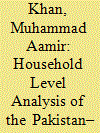

|
|
|
|
|
| Summary/Abstract |
Pakistan and Malaysia have a significant bilateral economic relationship. The Pakistan–Malaysia Free Trade Agreement (FTA) was signed in 2007, and was implemented in 2008. Pakistan’s volatile exports to Malaysia never achieved a sustainable period of growth. Trade balance has not achieved significant changes even after 9 years of implementation of the agreement. With this backdrop, this study first quantifies the current FTA between Pakistan and Malaysia and then suggests changes that could be made to improve the outcome for Pakistan. A new global economic trade model is adapted to include more detailed information on Pakistan’s labor and household groups into the Global Trade Analysis Project (GTAP) database. This allows for a more detailed analysis of the impact of the FTA on Pakistan at the household level. The results show that there is win–win scenario for both Pakistan and Malaysia if both are able to renegotiate the current FTA to get the same tariff concession as awarded to each other’s trading partners.
|
|
|
|
|
|
|
|
|
|
|
|
|
|
|
|
| 6 |
ID:
095930


|
|
|
|
|
| Publication |
2010.
|
| Summary/Abstract |
The central themes to be addressed during the Doha Round of the world trade negotiations are the reduction of the agricultural production and export subsidies and improved market access for agricultural and non-agricultural goods. The G-20 group wields enough power to press negotiations at the Doha Round toward lower agricultural trade barriers and production and export subsidies. The objective of this study is to determine the impacts of the Doha Round on the economies of Brazil, China, and India. The Global Trade Analysis Project's (GTAP) general equilibrium model and database (version 7) are used. The Doha Round scenarios simulated in this paper consider the WTO agricultural production and export subsidy reduction requirement, and the application of the Harbinson approach, and Swiss formula to reduce import tariffs. Brazil and China present the highest GDP growth rate varying from 0.4 % to 1.4%. India shows a negative GDP growth rate in all scenarios, except in that which replicates the Uruguay Round. The welfare gains are positive, but small, for Brazil, China and India. The GDP loss observed in the economies of the EU25 and the US may make it difficult to reach a trade agreement at the Doha Round.
|
|
|
|
|
|
|
|
|
|
|
|
|
|
|
|
| 7 |
ID:
147891


|
|
|
|
|
| Summary/Abstract |
The plethora of Regional Trade Agreements, especially in Asia, has created a complex web of noodle bowl, which has made trade more difficult. Many countries of Asia are now trying to be part of mega-free trade agreements (FTAs). While Association of Southeast Asian Nations (ASEAN) is consolidating through ASEAN+1 initiative leading to Regional Cooperation and Economic Partnership (RCEP), no such effort has been initiated so far by the South Asian Association for Regional Cooperation (SAARC). This study thus examines the possible effects of regional integration between ASEAN and SAARC on various sectors, as well as on macro-economic and trade areas by using the Global Trade Analysis Project (GTAP) model and database. A scenario of a complete integration between ASEAN and SAARC is simulated using the GTAP model, where the tariffs between ASEAN and SAARC are eliminated on all items but maintained for other trading partners. This article suggests for, among others, consolidation of ASEAN and SAARC FTAs, which will have a greater welfare enhancement, though some sectors will require adjustments due to their sensitivities. The article recommends for a policy dialogue between ASEAN and SAARC as such a process can only be initiated through a political engagement. It also recommends that the developing countries shall eliminate their tariffs in 5 years and allow longer time frame for the LDCs.
|
|
|
|
|
|
|
|
|
|
|
|
|
|
|
|
| 8 |
ID:
142016
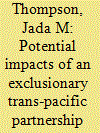

|
|
|
|
|
| Summary/Abstract |
The Trans-Pacific Partnership (TPP) is a free trade agreement that hopes to eliminate all tariff and non-tariff trade barriers between 12 participating countries. Japan, the fourth-largest trading partner for the United States, is a significant player in the negotiations. Due to cultural and historical significance it is expected that Japan will ask for exclusions on agricultural products, limiting the overall effectiveness of a fully liberalised agreement. Using a computable general equilibrium modelling framework across varying scenarios, we show the difference between the full liberalisation and potential exclusionary scenarios. Estimates show that a 25 per cent reduction in import tariffs on agricultural commodities in Japan results in a difference of net welfare benefits equal to –USD 7 billion, emphasising the importance of these concessions.
|
|
|
|
|
|
|
|
|
|
|
|
|
|
|
|
| 9 |
ID:
139480
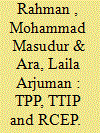

|
|
|
|
|
| Summary/Abstract |
The Transatlantic Trade and Investment Partnership (TTIP), the Trans-Pacific Partnership (TPP) and the Regional Comprehensive Economic Partnership (RCEP) could be the biggest trade deals in history. As the European Union (EU), the United States (US) and RCEP countries are the biggest trading partner of all South Asian countries, such preferential tariff arrangements could lead to a significant erosion of preferences enjoyed currently by the South Asian countries. Against this backdrop, the main objective of the present study is to investigate the potential economic impacts of tariff eliminations under TPP, TTIP and RCEP on South Asian countries using a standard computable general equilibrium model. The analysis evinces that under complete integration, in terms of tariff elimination, under these three mega deals, the excluded South Asian countries could face a tremendous negative impact on their economies. The analysis also suggests that South Asia may consider joining the TPP to minimize the negative economic impact due to arise from these mega deals.
|
|
|
|
|
|
|
|
|
|
|
|
|
|
|
|
| 10 |
ID:
147332
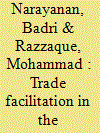

|
|
|
|
|
| Summary/Abstract |
This article examines the economic impact of trade facilitation between Commonwealth country members, using a global computable general equilibrium framework. We document enormous economic impact, much higher than a complete tariff liberalisation amongst these countries. The economic impact is quite visible in terms of welfare, gross domestic product, employment and trade in several sectors. We abstract from the costs involved in such trade facilitation—accounting for them is beyond the scope of this study.
|
|
|
|
|
|
|
|
|
|
|
|
|
|
|
|
| 11 |
ID:
170360
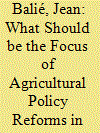

|
|
|
|
|
| Summary/Abstract |
While a lot of research has been conducted on agricultural subsidies and other forms of policy transfers in developed and developing countries alike, substantial data constraints have characterised those conducted in developing countries. For this study, we employ a novel and uniquely developed dataset on these policies in Sub-Saharan Africa (SSA), to analyse the impact of policy reforms, using the latest available GTAP 9.1 Data Base, in the widely employed GTAP framework, for the first time. We simulate the scenarios of removal of output subsidies, removal of ‘market development gaps’ within and outside the country. Our results indicate that removing market development gaps is likely to increase the agricultural output without affecting trade much, while removing the subsidies could harm output a lot by import-substitution of the costly domestic output. We conclude that governments in SSA may do well to focus on developing their markets better rather than cutting the assistance to their farmers, which could in fact be counter-productive instead of raising the efficiency of domestic farmers through competition.
|
|
|
|
|
|
|
|
|
|
|
|
|
|
|
|
|
|
|
|
|